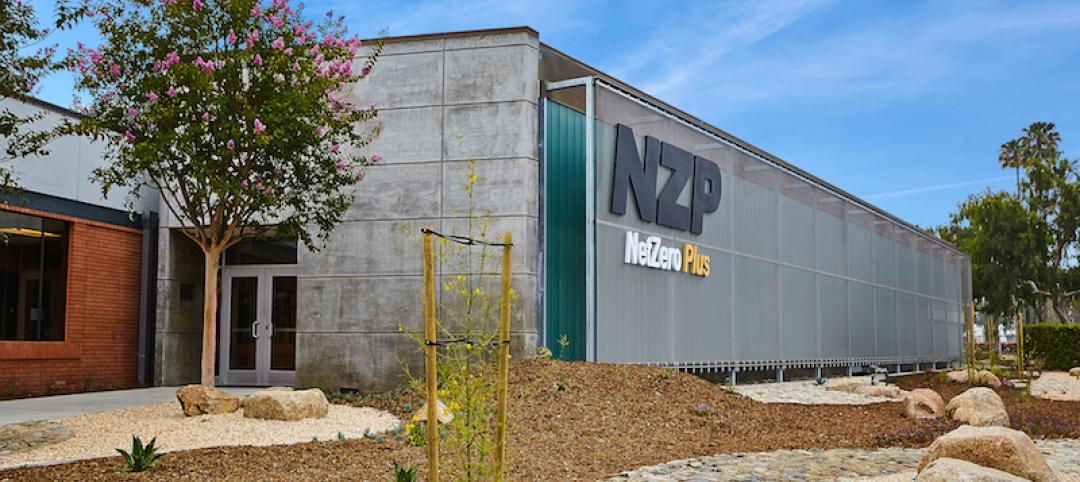Marking the beginning of a new era of transparency around energy use in buildings, New York City has publicly posted 2011 energy benchmarking results for 2,065 large commercial properties, which together cover more than 530 million square feet.
This is the first time that any U.S. city, state, or county has disclosed private-sector building energy data from a mandatory benchmarking policy.
The 2011 results are posted on the Greener, Greater Buildings Plan website, along with a letter giving a more detailed explanation of the output scores. The posting of benchmarking results will now be an annual occurrence for all large buildings in New York City. Results for large residential buildings will be posted for the first time in the fall of 2013, along with those for commercial and municipal buildings.
Energy use in buildings is responsible for roughly 75% of New York City’s emissions. The benchmarking, or measuring, and disclosure of energy use in buildings is the cornerstone of the city’s Greener, Greater Buildings Plan -- the most comprehensive policy in the nation addressing energy use in existing buildings -- and it is key to achieving the ambitious PlaNYC goal of reducing citywide carbon emissions 30 percent by 2030.
The benchmarking data can be used to assess where cost-effective building improvements can be made and to allow the market to find those opportunities. And since New York City’s benchmarking requirement is annual, the city and the market will be able to reward buildings that improve their performance year on year.
The benchmarking data also enabled the city to analyze for the first time how building energy use varies with building age, location, size, fuel mix, and an assortment of other factors.
Benchmarking data from 2010, released last month, showed that energy-use intensity varies dramatically among the same types of buildings, with the worst-performing buildings using three to five times the amount of energy per square foot as the best. Consequently, there is potential to save tremendous amounts of energy by improving the efficiency of the poor performers.
Under New York’s benchmarking ordinance, building owners annually enter energy and water use data and other pertinent information about their buildings, such as square footage and hours of operation, into the U.S. Environmental Protection Agency’s (EPA) free online benchmarking tool, ENERGY STAR Portfolio Manager.
From this information, Portfolio Manager calculates the benchmarking results, including the energy and water use per square foot, the carbon emissions, and for some types of buildings, a 1-to-100 ENERGY STAR rating comparing the building’s relative energy performance with other similar buildings, normalized for building occupancy factors. The city’s posting includes these outputs.
However, even if all the input data were correct, the benchmarking results still require interpretation. There are many reasons why a building might have a high energy intensity. Sometimes that could be due to inefficient operations or outmoded equipment, but it also could be due to a high occupant density or longer hours of operation. High energy intensity does not always mean energy waste. +
Related Stories
Energy | Sep 13, 2016
Oberlin College to hold conference on post-fossil fuel economy
The gathering will address climate change and new sources of energy.
Sustainability | Aug 30, 2016
New federal project plans must include climate impacts
Agencies must quantify the specific impacts when possible.
Energy Efficiency | Aug 17, 2016
Investor Confidence Project aimed at raising trustworthiness on energy efficiency projects
The new initiative screens projects to see if they are investor-ready.
Sponsored | Energy Efficiency | Jul 27, 2016
Metal Roofs Have Solar Advantage
A large roof can become a resource that saves significant money on energy consumption and helps reduce emissions of CO2 and it turns out metal roofs make excellent hosts for solar panels.
Sponsored | Energy Efficiency | Jul 8, 2016
Solar carports power Major League Soccer stadium in Utah
Wanting to capitalize on the abundant energy produced by the sun, the Real Salt Lake professional soccer club built carports in the parking lot using MBCI metal roofing with solar panels. The panels generate 73% of the stadium’s total power needs.
Energy Efficiency | Jun 13, 2016
The nation’s largest net zero-plus commercial building retrofit opens in L.A.
The goal of the Net Zero Plus Electrical Training Institute is for this structure to become a model for emergency operations centers for communities.
Sustainability | Jun 8, 2016
New program certifies the performance of existing buildings in the U.S.
BREEAM USA, an offshoot of a program already in place in Europe, aims to ease the point of entry.
Sponsored | Energy Efficiency | May 16, 2016
Metal wall panels’ deep shadow lines break up massing of Georgia school
Marist School, a private Roman Catholic college preparatory school, creates a highly-sustainable structure on its campus.
Green | May 16, 2016
Development team picked for largest Passive House project in North America
The 24-story curved building would be 70% more efficient than comparable housing in New York City.
Green | Apr 27, 2016
Top 10 green building projects for 2016
The Exploratorium at Pier 15 in San Francisco and the West Branch of the Berkeley Public Library are two of the projects recognized by AIA COTE as the top green buildings of 2016.














